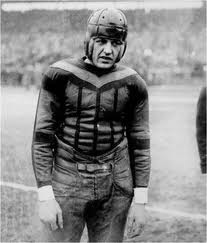In celebrating 100 seasons of the National Football League, one name that cannot be left out is that of one of the game’s most influential, and controversial people, Al Davis. A native of Brockton, Massachusetts who was raised in Brooklyn, he started his career in coaching in the 1950s, working as an offensive line coach at various universities, and also worked as a scout for a year with the Baltimore Colts in 1954. The formation of the new American Football League in 1960 gave Davis his coaching opportunity in the pros, and it was there that he cemented his legacy as an icon of the game. He joined Sid Gillman’s staff as receivers coach in 1960 and parlayed the Chargers’ success into landing the Oakland Raiders head coaching job in 1963. He was an immediate success in Oakland, guiding the previously foundering club to a 10-4 record, good for second place in the AFL’s Western Division, behind the eventual AFL champion Chargers. The Chargers had won the West despite the fact that Davis’ Raiders had beaten them twice. Davis was named AFL Coach of The Year for turning Oakland’s fortunes around. He remained Raiders’ coach for 2 more seasons when, with the AFL now embroiled in a war for survival with the established NFL, he agreed to take the position of AFL commissioner in 1966 when Joe Foss resigned. Foss had quit because he felt the battle with the NFL was a losing one, and the AFL owners felt Davis was a fighter who would work hard to win against the older league.

Davis (2nd from right) with the Chargers’ 1960 coaching staff
The owners wanted a fighter, and they got one in Davis. He implemented a plan where AFL teams would raid their NFL counterparts of their stars, preferably the quarterbacks, by signing those players to “future” contracts. The AFL signed Roman Gabriel of the Rams and John Brodie of the 49ers to those types of contracts, sending the NFL owners into a panic. Unbeknownst to Davis, a secret agreement was reached among a group he wasn’t included in, including NFL commissioner Pete Rozelle, Dallas executive Tex Schramm and Chiefs’ owner and AFL founder Lamar Hunt. The new agreement was basically a peace treaty merging the 2 leagues, voiding the “future” contracts and establishing a common draft of college players, while also including a plan to play a championship game between the 2 leagues, a game that would grow into the Super Bowl. Also, the 2 leagues would merge into a single entity, the National Football League, with teams divided into the National and American Conferences, in 1970 when the leagues’ separate television contracts were set to expire. Davis was furious with the agreement, feeling that he was undermined in his efforts to “win the war” with the NFL. To appease him, he was offered the position of AFL President since the merger also called for his position as AFL commissioner to be dissolved. He refused the job and eventually returned to the Raiders in an executive role as one of 3 “managing general partners”, with him getting a 10% ownership share of the club. He used a controversial move in 1972 to gain control of the franchise. One of the 3 partners, Wayne Valley, was in Munich for the Olympics, and while he was gone Davis drew up a revised agreement that gave him controlling interest in the team and the other partner signed it. Valley sued to overturn the new agreement but lost his case, since under California law it only took 2 of the 3 partners to validate it. Davis seemed to never get rid of the chip on his shoulder of losing out to Rozelle in the merger fight, and spent a lot of the next few decades fighting Rozelle and the NFL in court over various issues, including the right to move the Raiders to Los Angeles when he couldn’t get a new stadium built in Oakland. Things didn’t work out in L.A. either, and Davis relocated the franchise back to Oakland after 14 seasons, even though the team would be forced to play home games in the same old stadium they had left behind in 1982. The nomadic club will move again, this time to Las Vegas, beginning next season. The half century of fighting with the league in the courts aside, Davis was a genius when it came to the actual football side of things. He built the Raider franchise into one of professional sports’ most successful and popular teams, winning 3 Super Bowls along the way and establishing the “Silver and Black” team colors as well known in fans’ eyes. His mantras of “Commitment To Excellence” and “Just Win, Baby” are still widely associated with the team, even though they fell on hard times in the last few years of Davis’ life.

Al Davis flipped off the NFL for most of his football ownership days
As much of a renegade and a thorn in the side of the NFL as Davis was, he was also a visionary in the game and charitable when it came to his Raider “family”. He hired the first African American head coach, Art Shell, the first female front office executive, Amy Trask, and was the second to hire a Latino coach, Tom Flores. He retained close ties with all of his former players, who all returned the love. He was always true to his mantra of “Once A Raider, Always A Raider”. It was common to see old Raiders of the past like George Blanda, Jim Otto or Willie Brown around the team facility or in Davis’ owner’s box on game day. Despite being a maverick who fought the NFL for 50 years or more, the Pro Football Hall of Fame still overlooked all the controversy and inducted Davis into Canton in 1992.




















